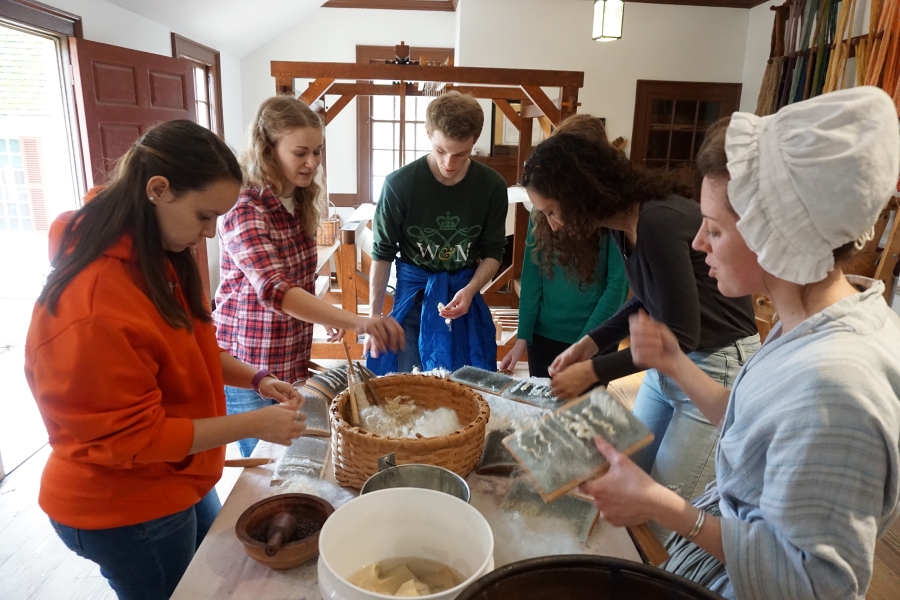Program for Visiting Students
The National Institute of American History & Democracy (NIAHD), a partnership between William & Mary and the Colonial Williamsburg Foundation, invites students at other colleges and universities to apply to join the Program in Material Culture & Public History as a Visiting Student. This program is open to undergraduates in any major as well as to graduate students who would like to spend either one or two semesters in residence at William & Mary.
NIAHD instructors teach classes that immerse students in an interdisciplinary approach to American History, Material Culture, and Public History. Visiting Students join with William & Mary students to think deeply about the ways in which scholars from many disciplines study historic events and peoples, landscapes, and material objects, and the equally diverse ways in which they communicate their ideas to public and academic audiences through media such as print, film, exhibits, and museum interpretations.

William & Mary, Colonial Williamsburg, and the Chesapeake Region
Visiting Students in NIAHD’s Program in Material Culture & Public History can connect to historic resources and projects at William & Mary, Williamsburg, and the Chesapeake Region.
William & Mary’s Historic Campus includes the Wren Building, the country’s oldest academic building still in use, the Brafferton, the President’s House, and Hearth: Memorial to the Enslaved.
Three collaborative projects at William & Mary work to highlight the experiences of peoples who often are not part of the historic narrative. James Monroe's Highland, located in Charlottesville, Virginia, focuses on our country’s fifth president and the enslaved men, women, and children who built, labored, and lived on this plantation. Highland engages with descendants of those enslaved at Highland through its Council of Descendant Advisors.
Next, The Lemon Project: A Journey of Reconciliation focuses on William & Mary’s role in the institution of slavery and the legacy of racism on campus. Members of the Lemon Project also participate in Universities Studying Slavery Consortium.
Third, William & Mary’s Anthropology Department includes the American Indian Resource Center. This group works to support Native communities, scholars, and students who focus on American Indian history and culture, and members of the public.
Located a short distance from campus, the Colonial Williamsburg Foundation is the world’s largest living history museum and the Art Museums of Colonial Williamsburg exhibits and preserves one of the world's finest collections of early American objects. Colonial Williamsburg’s curators, historians, archaeologists, and interpreters have wide-ranging interests and have a deep commitment to public education. Each semester students in NIAHD classes spend time studying and learning about history where it happened when they visit Colonial Williamsburg. NIAHD works with Stephen Seals and Jack Gary, its liaisons at Colonial Williamsburg, to connect students to opportunities to engage with history in the Historic Area and to gain hands-on experience in Public History through internships.
In addition to Public History opportunities at Colonial Williamsburg, Visiting Students can connect to Public Historians who work at locations such as:
Historic Jamestowne
Jamestown-Yorktown Foundation
Colonial National Historical Park
Fredericksburg & Spotsylvania National Military Park
Preservation Virginia
Monticello
Montpelier
Historic Christ Church
Civil War Trails
Fairfield Foundation














